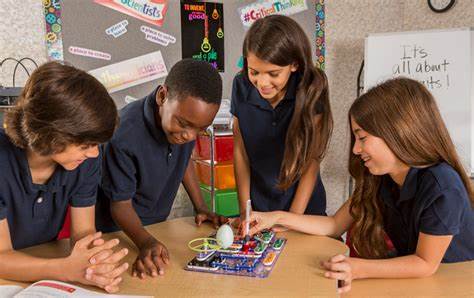In an increasingly technology-driven world, nurturing a child’s interest in Science, Technology, Engineering, and Mathematics (STEM) from a young age is crucial. STEM programs for young children provide engaging and hands-on learning experiences that lay the foundation for future success in these fields. This article delves into the various STEM programs available for young children and their importance in fostering a love for science and problem-solving.
STEM Education for Preschoolers
STEM Toys: There is a wide range of STEM-focused toys available for preschoolers, such as building blocks, puzzles, and robotic kits designed to develop problem-solving skills, creativity, and basic engineering principles.
STEM Books: Children’s books that introduce STEM concepts in a fun and accessible way are another valuable resource. These books can spark curiosity about the natural world, technology, and math.
STEM Workshops: Many community centers and libraries offer STEM workshops for preschoolers. These interactive sessions often involve simple experiments, crafts, and storytelling, making learning a joyful experience.
Elementary School STEM Programs
After-School Clubs: Elementary school children can join after-school STEM clubs that focus on specific areas like robotics, coding, or science experiments. These clubs encourage teamwork and hands-on exploration.
STEAM Integration: Some schools incorporate the arts into STEM programs, creating STEAM (Science, Technology, Engineering, Arts, and Mathematics) programs. This holistic approach fosters creativity alongside technical skills.
Science Camps: Summer science camps provide immersive STEM experiences, allowing children to explore a wide range of topics, from astronomy to chemistry.
Online STEM Resources
Educational Websites: Numerous websites, like Khan Academy, Scratch, and NASA’s Kids’ Club, offer free interactive lessons and activities that cater to various age groups.
STEM Apps: Educational apps like Tynker and Sphero Edu make learning STEM subjects enjoyable and accessible through gamified experiences.
Virtual STEM Classes: Online platforms and organizations like Outschool offer live virtual STEM classes taught by qualified instructors, giving children the opportunity to explore topics they are passionate about.
Science Museums and Centers
Interactive Exhibits: Science museums often have interactive exhibits that allow children to explore STEM concepts through hands-on activities. These institutions also host workshops and events designed for young learners.
Planetariums and Observatories: Learning about astronomy and space can be particularly fascinating for children. Planetariums and observatories offer educational shows and stargazing sessions.
LEGO Education Programs
LEGO Robotics: LEGO Education provides robotics kits that enable children to build and program robots, combining creativity and technology education.
LEGO Master Educators: Some schools and organizations partner with LEGO to train educators in incorporating LEGO-based STEM activities into the curriculum.
Conclusion
STEM programs for young children play a crucial role in fostering their natural curiosity, critical thinking, and problem-solving abilities. These programs not only prepare children for future careers in STEM fields but also promote a deeper understanding of the world around them. Whether through toys, books, workshops, or online resources, there are numerous opportunities for parents and educators to support young learners in their STEM journey. By investing in STEM education for young children, we are nurturing the next generation of innovators who will shape the future with their knowledge and creativity.

